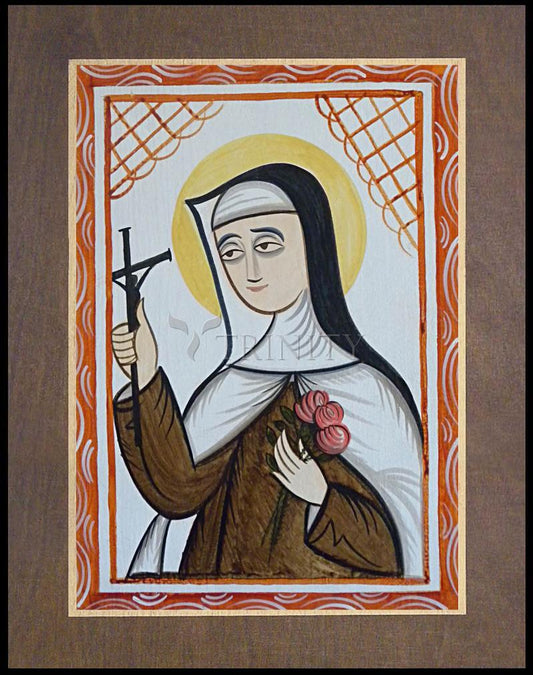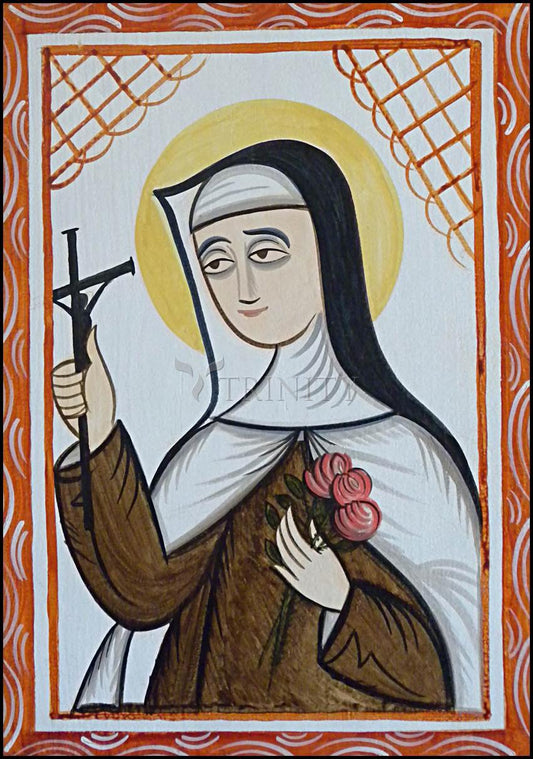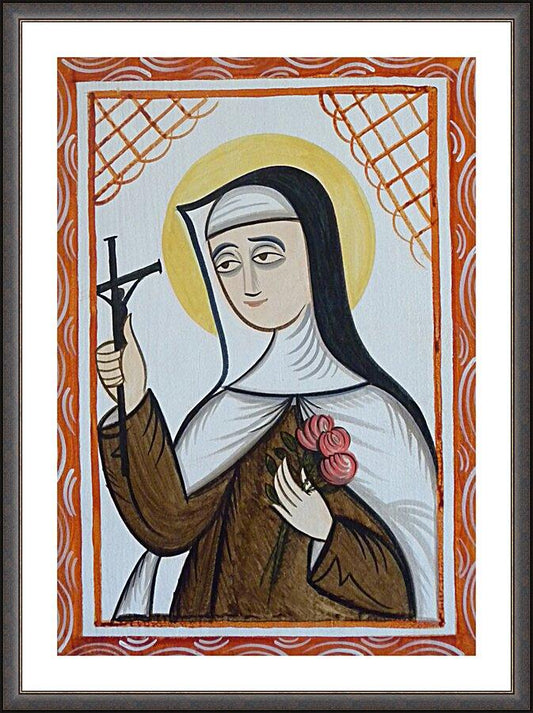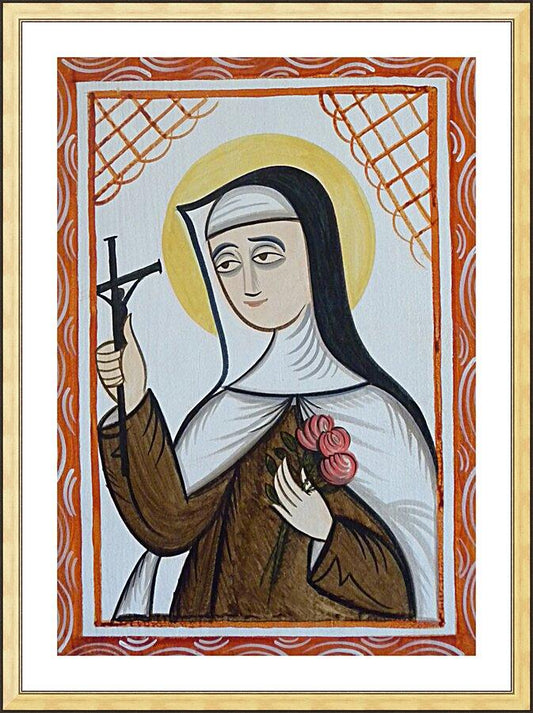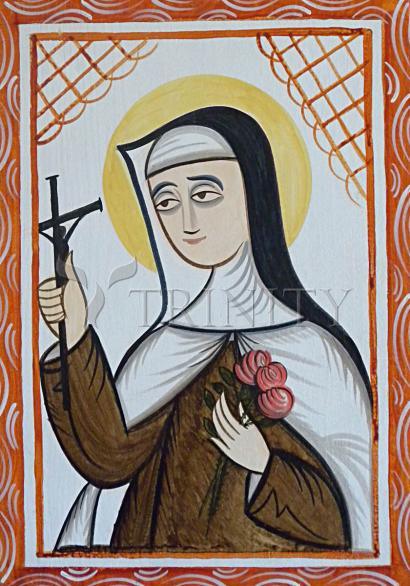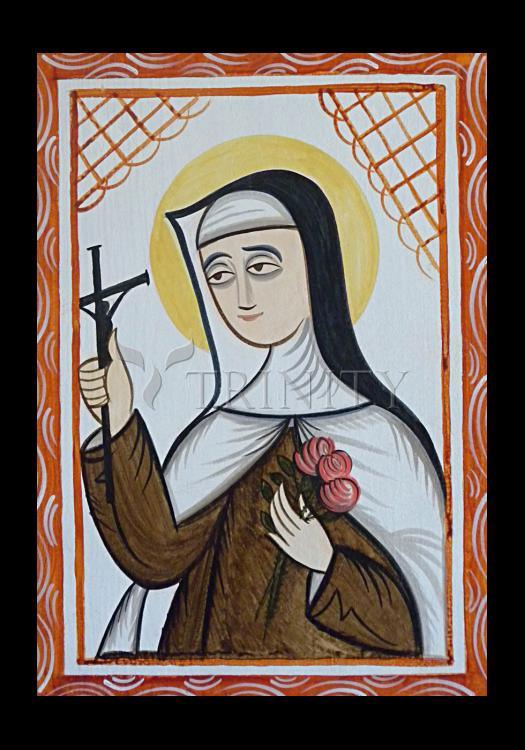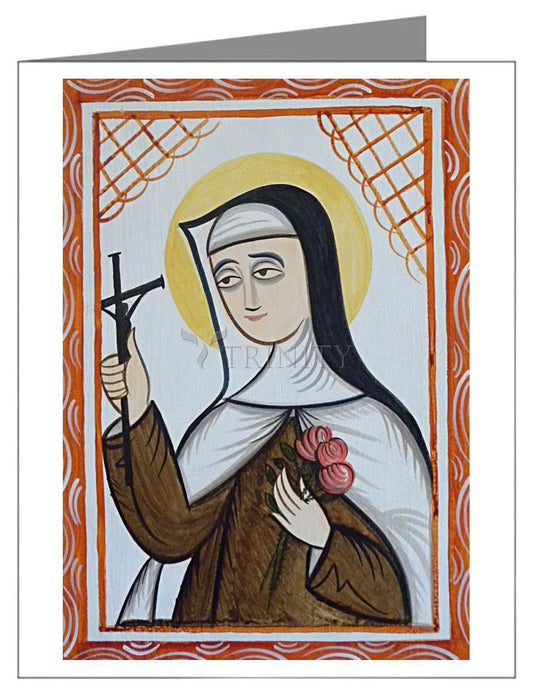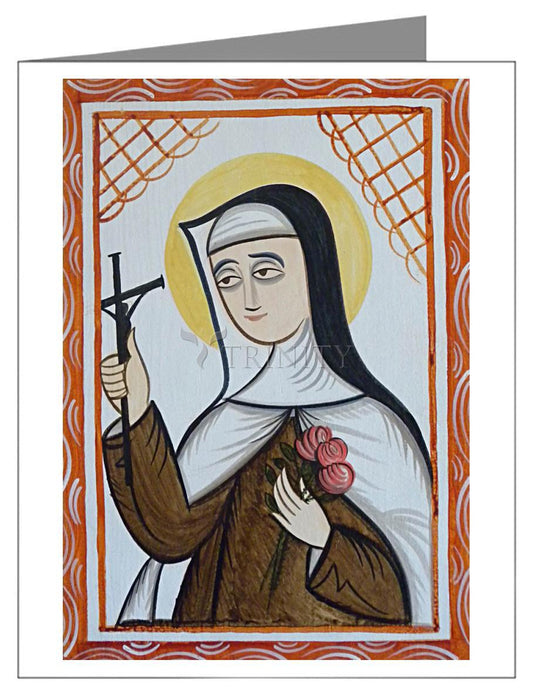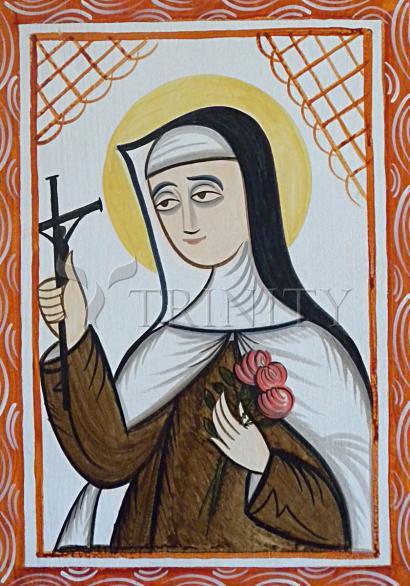Family background
She was born in Rue Saint-Blaise, Alençon, in France on January 2, 1873, the daughter of the Blessed Marie-Azélie Guérin, usually called Zélie, a lacemaker, and the Blessed Louis Martin, a jeweler and watchmaker. Both her parents were devout Catholics. Louis had tried to become a canon regular, wanting to enter the Great St Bernard Hospice, but had been refused because he knew no Latin. Zélie, possessed of a strong, active temperament, wished to serve the sick, and had also considered entering consecrated life, but the prioress of the canonesses regular of the Hôtel-Dieu in Alençon had discouraged her enquiry outright. Disappointed, Zélie learned the trade of lacemaking. She excelled in it and set up her own business on Rue Saint-Blaise at age 22.
Zélie Martin, mother of Thérèse. In June 1877 she left for Lourdes hoping to be cured, but the miracle did not happen. The Mother of God has not healed me because my time is up, and because God wills me to repose elsewhere than on the earth.
Louis and Zélie met in early 1858 and married on July 13 of that same year at the basilica Notre Dame of Alençon. Both of great piety, they were part of the petit-bourgeoisie, comfortable Alençon. At first they decided to live as brother and sister in a perpetual continence, but when a confessor discouraged them in this, they changed their lifestyle and had 9 children. From 1867 to 1870 they lost 3 infants and 5-and-a-half-year-old Hélène. All 5 of their surviving daughters became nuns:
Marie (February 22, 1860, a Carmelite in Lisieux, in religion, Sister Marie of the Sacred Heart, d. January 19, 1940),
Pauline (September 7, 1861, in religion, Mother Agnes of Jesus in the Lisieux Carmel, d. July 28, 1951),
Léonie (June 3, 1863, in religion Sister Françoise-Thérèse, Visitandine at Caen, d. June 16, 1941),
Céline (April 28, 1869, a Carmelite in Lisieux, in religion, Sister Geneviève of the Holy Face, d. February 25, 1959), and finally Thérèse.
Zélie was so successful in manufacturing lace that by 1870 Louis had sold his watchmaking shop to a nephew and handled the traveling and bookkeeping end of her lacemaking business.
Birth and survival
Louis Martin, father of Thérèse. " He was a dreamer and brooder, an idealist and romantic...To his daughters he gave touching and naïve pet names: Marie was his diamond, Pauline his noble pearl, Céline the bold one..But Thérèse was his petite reine, little queen, to whom all treasures belonged."
Soon after her birth in January 1873, the outlook for the survival of Thérèse Martin was very grim. Enteritis, which had already claimed the lives of four of her siblings, threatened Thérèse, and she had to be entrusted to a wet nurse, Rose Taillé, who had already nursed two of the Martin children. Rose had her own children and could not live with the Martins, so Thérèse was sent to live with her in the forests of the Bocage at Semallé. On Holy Thursday April 2, 1874, when she was 15 months old, she returned to Alençon where her family surrounded her with affection. She was educated in a very Catholic environment, including Mass attendance at 5:30 AM, the strict observance of fasts, and prayer to the rhythm of the liturgical year. The Martins also practiced charity, visiting the sick and elderly and welcoming the occasional vagabond to their table. Even if she wasn't the model little girl her sisters later portrayed, Thérèse was very sensitive to this education. She played at being a nun. One day she went as far as to wish her mother would die; when scolded, she explained that she wanted the happiness of Paradise for her dear mother. Described as generally a happy child, she was emotional too, and often cried: "Céline is playing with the little one with some bricks... I have to correct poor baby who gets into frightful tantrums when she can't have her own way. She rolls in the floor in despair believing all is lost. Sometimes she is so overcome she almost chokes. She is a very highly-strung child." At 22, Thérèse, then a Carmelite, admitted: "I was far from being a perfect little girl."
"I hear the baby calling me Mama! as she goes down the stairs. On every step, she calls out Mama! And if I don't respond every time, she remains there without going either forward or back." Madame Martin to Pauline, November 21, 1875.
On August 28, 1877, Zélie Martin died of breast cancer, aged 45. Her funeral was conducted in the basilica Notre Dame of Alençon. From 1865 she had complained of breast pain and in December 1876 a doctor told her of the seriousness of the tumour. Feeling the approach of death Madame Martin had written to Pauline in spring 1877, "You and Marie will have no difficulties with her upbringing. Her disposition is so good. She is a chosen spirit." Thérèse was barely 4 1/2 years old. Her mother's death dealt her a severe blow and later she would consider that the first part of her life stopped that day. She wrote: "Every detail of my mother's illness is still with me, specially her last weeks on earth." She remembered the bedroom scene where her dying mother received the last sacraments while Thérèse knelt and her father cried. She wrote: "When Mummy died, my happy disposition changed. I had been so lively and open; now I became diffident and oversensitive, crying if anyone looked at me. I was only happy if no one took notice of me... It was only in the intimacy of my own family, where everyone was wonderfully kind, that I could be more myself."
Three months after Zélie died, Louis Martin left Alençon, where he had spent his youth and marriage, and moved to Lisieux in the Calvados Department of Normandy, where Zélie's pharmacist brother Isidore Guérin lived with his wife and their two daughters, Jeanne and Marie. In her last months, Zélie had given up the lace business; after her death, Louis sold it. Louis leased a pretty, spacious country house, Les Buissonnets, situated in a large garden on the slope of a hill overlooking the town. Looking back, Thérèse would see the move to Les Buissonnets as the beginning of the "second period of my life, the most painful of the three: it extends from the age of four-and-a-half to fourteen, the time when I rediscovered my childhood character, and entered into the serious side of life." In Lisieux, Pauline took on the role of Thérèse's Mama. She took this role seriously, and Thérèse grew especially close to her, and to Céline, the sister closest to her in age.
Early years
Thérèse was taught at home until she was eight and a half, and then entered the school kept by the Benedictine nuns of the Abbey of Notre Dame du Pre in Lisieux. Thérèse, taught well and carefully by Marie and Pauline, found herself at the top of the class, except for writing and arithmetic. However, because of her young age and high grades, she was bullied. The one who bullied her the most was a girl of fourteen who did poorly at school. Thérèse suffered very much as a result of her sensitivity, and she cried in silence. Furthermore, the boisterous games at recreation were not to her taste. She preferred to tell stories or look after the little ones in the infants class. "The five years I spent at school were the saddest of my life, and if my dear Céline had not been with me I could not have stayed there for a single month without falling ill." Céline informs us, "She now developed a fondness for hiding, she did not want to be observed, for she sincerely considered herself inferior." On her free days, she became more and more attached to Marie Guérin, the younger of her two cousins in Lisieux. The two girls would play at being anchorites, as the great Teresa had once played with her brother. And every evening she plunged into the family circle. "Fortunately, I could go home every evening and then I cheered up. I used to jump on Father's knee and tell him what marks I had had, and when he kissed me all my troubles were forgotten...I needed this sort of encouragement so much." Yet the tension of the double life and the daily self-conquest placed a strain on Thérèse. Going to school became more and more difficult.
Les Buissonnets, The Martin family house in Lisieux to which they moved in November 1877 following the death of Madame Martin. Thérèse lived here from November 16, 1877 to April 9, 1888, the day she entered Carmel.
When she was nine years old, in October 1882, her sister Pauline who had acted as a "second mother" to her, entered the Carmelite monastery at Lisieux. Thérèse was devastated. She understood that Pauline was cloistered and that she would never come back. "I said in the depths of my heart: Pauline is lost to me!" The shock reawakened in her the trauma caused by her mother's death. She also wanted to join the Carmelites, but was told she was too young. Yet Thérèse so impressed Mother Marie Gonzague, the prioress at the time of Pauline's entry to the community that she wrote to comfort her, calling Thérèse "my future little daughter".
Born: January 2, 1873 at Alcon, Normandy, France
Died: September 30, 1897 at Lisieux, France of tuberculosis
Canonized: May 17, 1925 by Pope Pius XI
Also known as: Therese of the Child Jesus, the Little Flower, the Little Flower of Jesus



